|
|
| |

Corn is a grass native to the
Americas. Although it
probably originated in Mexico, it was grown in China, Sumatra and India
years before most other countries.
Archaeologists have uncovered proof that popcorn had been around long
before the arrival of the Europeans in the New World.
An 80,000-year-old fossil pollen found 200 feet below Mexico City has
been identified as corn pollen.
Evidence of corn in central Mexico suggests it was used there as much
as 9,000 years earlier, where it was domesticated from wild grass.
Excavations in the Bat Cave of West Central New Mexico in 1948 and 1950
turned up popcorn ears nearly 5,600 years old, according to
radio-carbon tests.
The exact origin of the grain remains unknown, but tiny ears of corn
have been discovered at ancient village sites and in tombs of early
Native Americans.
Cultivated corn is known to have existed in the southwestern U.S. for
at least 3,000 years.
In tombs on the east coast of Peru, researchers uncovered
1,000-year-old grains of popcorn so well preserved, that they still
pop.
Biblical accounts of 'corn' stored in the pyramids of Egypt are
misunderstood. The 'corn' from the bible was probably barley. This
mistake comes from a changed use of the word 'corn', which used to
signify the most-used grain of a specific place. In England, 'corn' was
wheat, and in Scotland and Ireland the word referred to oats. Since
maize was the common American 'corn', it took that name - and keeps it
today.
Other treasures have turned up to validate popcorn's place in the past.
Pottery popcorn poppers dating back to pre-Inca cultures in Peru have
been discovered.
A Zapotec funeral urn found in Mexico and dating from about 300 A.D.
depicts a Maize God with symbols representing primitive popcorn in his
headdress.
Ancient popcorn poppers - shallow vessels with a hole on the top, a
single handle sometimes decorated with a sculptured motif such as a
cat, and sometimes decorated with printed motifs all over the vessel -
have been found on the north coast of Peru and date back to the
pre-Incan Mohica Culture of about 300 A.D.
Most popcorn from 800 years ago was tough and slender-stalked. The
kernels themselves were quite resilient. Even today, winds sometimes
blow desert sands from ancient burials, exposing kernels of popped corn
that look fresh and white but are many centuries old.
In fact, research has proven that the ancestors of most Native American
tribes enjoyed popcorn even before the birth of Christ.
To the Aztecs and the Incas, corn was a staple of their diet that
provided flour and vegetable dishes for their meals.
Here in the United States, many of the various Native American tribes
have traditionally grown corn also known as maize and used it for both
food and utilitarian objects.
Corn was so important to some of the Pueblo tribes of the Southwest
that it was considered one of the three sacred foods (along with beans
and squash), and was so sacred that some groups even worshiped it.
Indeed, Native American mythology is rich with stories involving corn
and important religious events.
Even before Columbus discovered the Arawak and Carib Indians they were
already using popcorn for decorations and food in the West Indies in
1492.
In 1519, Cortes got his first sight of popcorn when he invaded Mexico
and came into contact with the Aztecs. Popcorn was an important food
for the Aztec Indians, who also used popcorn as decoration for
ceremonial headdresses, necklaces and ornaments on statues of their
gods, including Tlaloc, the god of maize, rain and fertility.
An early Spanish account of a ceremony honoring the Aztec gods who
watched over fishermen reads: "They scattered before him parched corn,
called momochitl, a kind of corn which bursts when parched and
discloses its contents and makes itself look like a very white flower;
they said these were hailstones given to the God of Water.
When Columbus first arrived in the West Indies, the natives tried to
sell popcorn to his crew.
Many eastern tribes shared their knowledge of corn production with the
early European settlers, an act which saved many of these pioneers from
starvation.
By the time Europeans began settling in the "New World," popcorn and
other corn types had spread to all Native American tribes in North and
South America, except those in the extreme northern and southern areas
of the continents. More than 700 types of popcorn were being grown,
many extravagant poppers had been invented, and popcorn was worn in the
hair and around the neck. There was even a widely consumed popcorn beer.
Early French explorers through the Great Lakes region (circa 1612)
reported that the Iroquois popped popcorn in a pottery vessel with
heated sand and used it to make popcorn soup, among other things.
Writing of Peruvian Indians in 1650, the Spaniard Cobo says, "They
toast a certain kind of corn until it bursts. They call it pisancalla,
and they use it as a confection."
Native Americans would bring popcorn "snacks" to meetings with the
English colonists as a token of goodwill during peace negotiations. At
the first Thanksgiving Feast at Plymouth, Massachusetts, Quadequina,
brother of the Wampanoag chief Massasoit, brought a deerskin bag of
popped corn to the celebration as a gift.
Colonial housewives served popcorn with sugar and cream for breakfast -
the first "puffed" breakfast cereal eaten by Europeans. Some colonists
popped corn using a cylinder of thin sheet-iron that revolved on an
axle in front of the fireplace like a squirrelncage.
Popcorn was very popular from the 1890s until the Great Depression.
Street vendors used to follow crowds around, pushing steam or
gas-powered poppers through fairs, parks and expositions.
During the Depression, popcorn at 5 or 10 cents a bag was one of the
few luxuries down-and-out families could afford.
While other businesses failed, the popcorn business thrived. An
Oklahoma banker who went broke when his bank failed bought a popcorn
machine and started a business in a small store near a theater. After a
couple years, his popcorn business made enough money to buy back three
of the farms he'd lost.
During World War II, sugar was sent overseas for U.S. troops, which
meant there wasn't much sugar left in the States to make candy. Thanks
to this unusual situation, Americans ate three times as much popcorn as
usual.
Popcorn went into a slump during the early 1950s, when television
became popular. Attendance at movie theaters dropped and, with it,
popcorn consumption. When the public began eating popcorn at home, the
new relationship between television and popcorn led to a resurge in
popularity.
Microwave popcorn - The very first use of microwave heating in the
1940s - Has already accounted for $240 million in annual U.S. popcorn
sales in the 1990s.
Americans today consume 17.3 billion quarts of popped popcorn each year.
The average American eats about 68 quarts.
If It's Not From The Forest, It's Not Wild!
Mike Poulin,
James Bay Wild Fruit
|

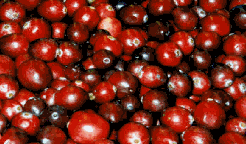
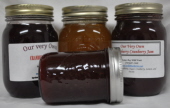
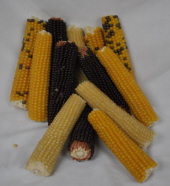
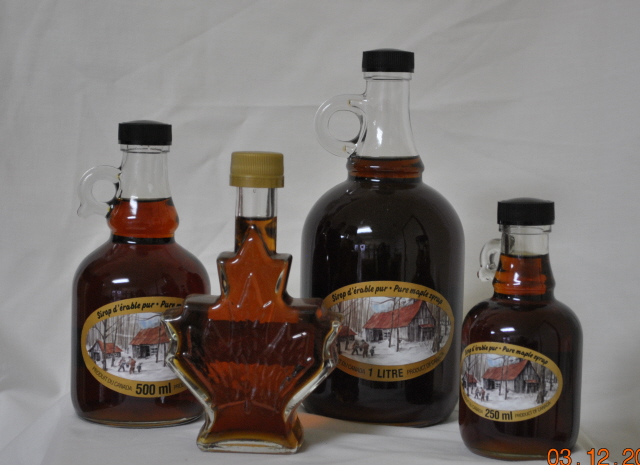
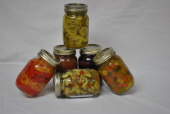

















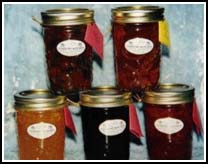




|
|